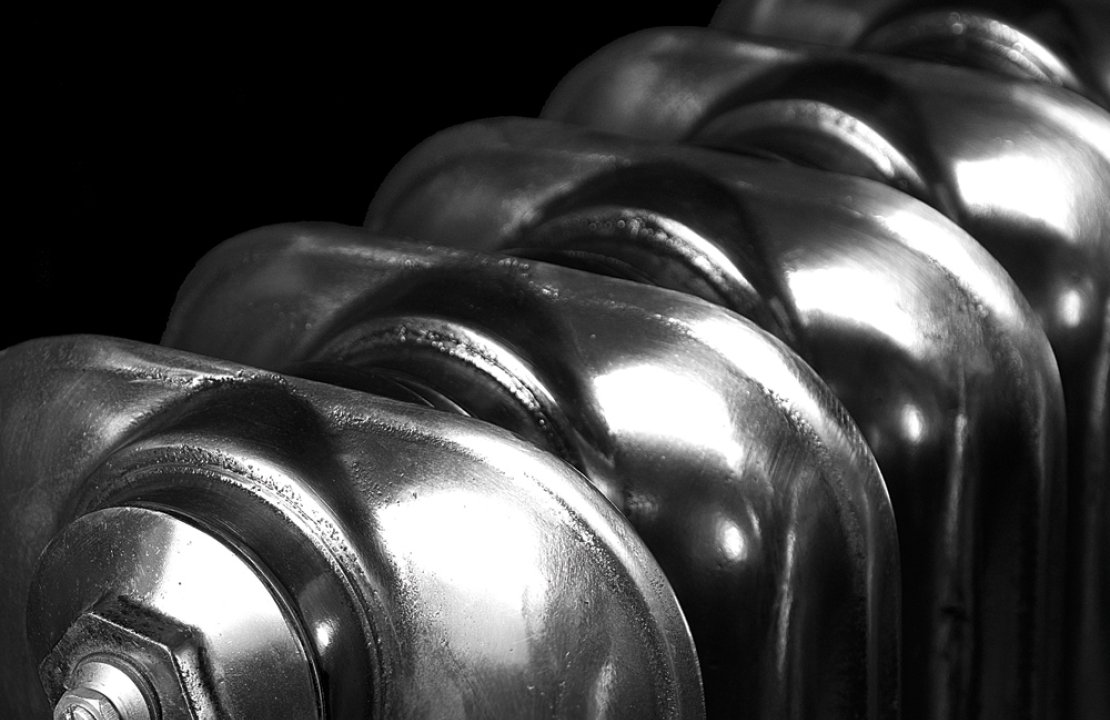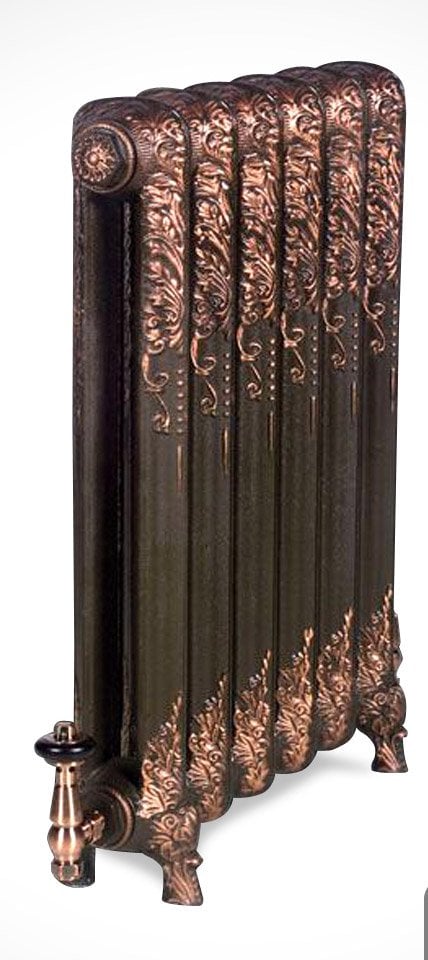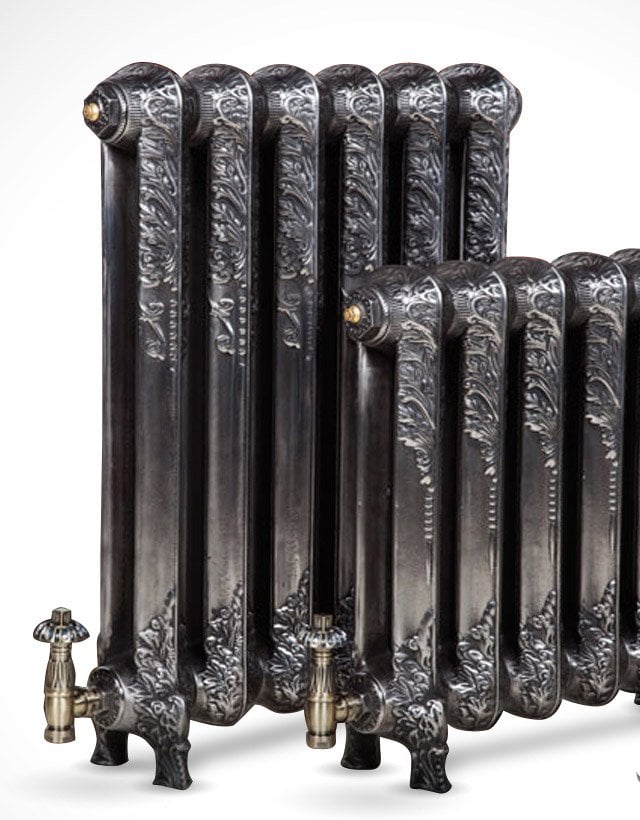Are old cast iron radiators worth anything?
Victorian cast iron radiators that you may already have in a period property can be renovated to preserve some of the history of your house – this may cost more than buying reproduction, and renovated radiators do not tend to be very heat efficient. You may also have issues connecting them to your modern plumbing and heating system and converters may be required. For this reason reselling any unwanted original cast iron radiators may not be that lucrative - they are better kept as ornaments in your house. It's more sensible to purchase new reproduction cast iron radiators for your main source of heating. However small rooms such as cloakrooms that do not require a large heat output could be the new home for your old cast iron radiator.
What design of cast iron radiators would the Victorians have used?
Cast iron radiators when connected are filled with water and via convection the water flows through the radiator and when heated it heats up the room. During the Victorian period, cast iron radiators were popularly used in schools, churches and hospitals and these plain styles are widely available. Victorian cast iron radiators can also be decorative and these more ornate styles were used more when radiators started to be used in the homes of the wealthy.
Cast iron radiators are heavy and most will require specialist radiator feet so that they stand on the floor, rather than be wall mounted like most modern radiators. If you prefer to wall mount your traditional cast iron radiator, the wall needs to be extremely strong to hold the radiator and the fixings you use must also be extremely good in order to avoid injury.
Cast iron radiators can be supplied in a variety of finishes nowadays including plain, painted in any colour including metallic colours, sandblasted, antiqued and polished. You can take an old style radiator and paint it hot pink to make a real statement with your interior.
New cast iron radiators need to adhere to heat efficiency standards – they can be fitted with thermostatic cast iron radiator valves which saves energy in rooms, or non-thermostatic radiator valves which are cheaper. Radiators taps are however the cheapest option. Cast iron radiator valves take a 1/2 or 3/4 inch connections and come in a variety of different finishes, colours and styles to fit into a period interior including brass, chrome and copper. If you are on a budget, use the expensive valves in public areas and the cheaper ones in bedrooms.
In order to choose the right size and BTU output for your Victorian central heating unit, consult a BTU or Heat Output calculator which will do all of the calculations for you.
Where should you put your cast iron radiator?
The best place to locate Victorian cast iron radiators in your room is somewhere where they won't be in the way. In bedrooms, it’s best not to locate the radiator next to your bed if it can be helped. Take into account the room layout before choosing a location for your Victorian style radiator. Under the window is a good option if the cast iron radiator is not too tall – in this case choose a model with more columns and less height.
For any further assistance with any aspect of choosing a Victorian cast iron radiator or cast iron radiator valves, please contact The Victorian Emporium and we will be pleased to help you.




Posted by S - May 10, 2022 - 16:28
“and renovated radiators do not tend to be very heat efficient.”
All radiators are 100% efficient. They neither create nor destroy energy. Any heat transferred to them is radiated.